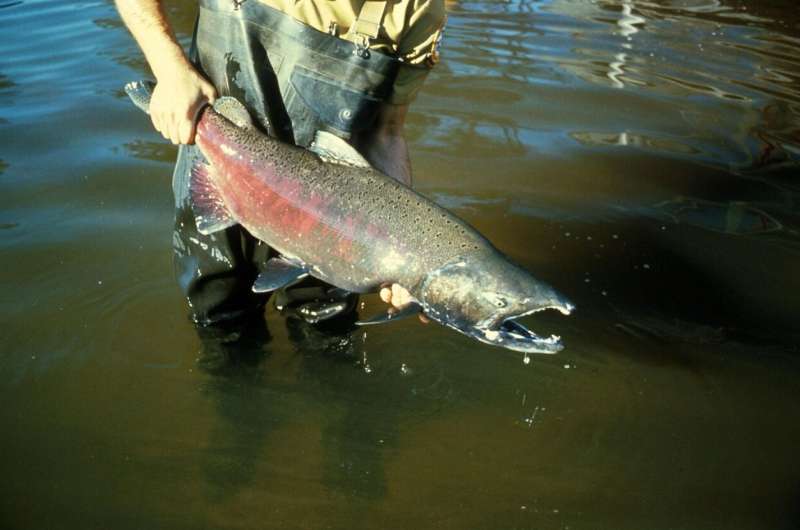Explore the fascinating journey of Pacific salmon, as they transport vital nutrients and concerning contaminants between marine and terrestrial ecosystems. This study tracks the migration trends of these remarkable fish over 40 years, revealing the complex interplay between the ‘bright’ and ‘dark’ sides of their ecological contributions. Discover how shifts in the salmon community have impacted the flow of these essential elements, and the tradeoffs involved in their consumption. Pacific salmon are truly remarkable ambassadors, connecting the ocean and land in profound ways. This research offers insights that can guide sustainable management of these precious resources.

Unveiling the Ecological Subsidies of Pacific Salmon
Each year, millions of Pacific salmon embark on an awe-inspiring journey from the ocean to their freshwater spawning grounds, marking the end of their life cycle. This grand migration has far-reaching effects, as the salmon transport vital nutrients and concerning contaminants through the food webs and ecosystems they traverse.
A team of researchers, led by Jess Brandt from the University of Connecticut, set out to study these ‘bright’ and ‘dark’ sides of the salmon’s ecological subsidies. By combining estimates of migrating fish biomass over 40 years (1976-2015) with data on nutrient and contaminant concentrations, the researchers were able to quantify the movement of these materials across the continent. The findings, published in the prestigious journal Nature, shed new light on the profound impacts of these remarkable fish.
Tracking the Ebb and Flow of Salmon-Borne Nutrients and Contaminants
The researchers’ analysis revealed that, on average, an estimated 119 million Pacific salmon returned to North America each year during the study period. This staggering biomass translated to the movement of thousands of tons of nutrients and kilograms of contaminants, making the fluxes they reported among the largest ever estimated for migratory animals.
Furthermore, the study found that the Pacific salmon community grew substantially over the 40-year period, both in terms of biomass and number of fish. This growth, driven largely by a surge in pink salmon populations, resulted in a 30% increase in the estimated amount of nutrients and contaminants transported by salmon in 2015 compared to 1976.
Navigating the Tradeoffs of Salmon-Borne Subsidies
The researchers also delved into the differences among Pacific salmon species, exploring how factors like trophic level, ocean residence time, and body size influence the concentrations of contaminants they accumulate. They found that while Chinook salmon, the largest of the species, carry relatively high ratios of contaminants to nutrients, the sheer numbers of pink salmon result in them transporting the largest overall amounts of contaminants.
This complex interplay between nutrients and contaminants has important implications for the ecosystems and organisms that rely on salmon, including humans. The researchers compared the benefits of the omega-3 fatty acids found in salmon with the potential health risks associated with the contaminants, and concluded that the overall ‘net benefit’ of salmon consumption outweighs the risks. These findings suggest that the ecosystem-wide benefits of salmon-borne subsidies may also outweigh the drawbacks, though careful management and monitoring will be crucial to maintaining this delicate balance.
